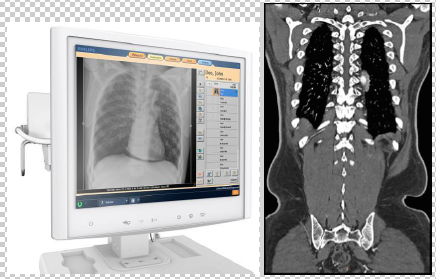By Dominic Siewko, Philips
Dec. 27, 2014 - Radiation dose from diagnostic procedures has become a topic of debate in the popular press. And with the Medicare payments for some higher-dose CT scans on the chopping block starting in 2016, the red flag has been effectively raised. Rightfully so – health care providers and manufacturers need to take every step to ensure the safety of both patients and clinicians. But there’s still confusion in the market about the definition of safety when it comes to diagnostic scans, and as a health physicist, I’m compelled to set the record straight on the real risk and reward of radiation dose.
The Benefit is Clear
In the U.S., the use of CT scans nearly tripled, from 52 scans per 1,000 patients to 149 scans per 1,000 patients between 1996 and 2010. According to the American College of Radiology (ACR), nearly 68 million CT scans are performed annually in the U.S. today. Put another way, nearly 1 in every 5 Americans will receive a CT scan this year. The reason is simple – CT scans can yield a better, more precise image than a standard x-ray, and can even eliminate the need for exploratory surgery in some cases. That’s the benefit part of the equation.
But What’s the Risk?
Radiation dose is the other half of the equation. With CT scans, technicians can protect themselves or limit their doses by stepping out of the room or behind a barrier during the procedure. Patients, as the subjects of the procedure, receive the exposure. But while a CT scan adds to our dose burden, let’s put it in perspective. The amount of “background” radiation we’re all exposed to in a year is actually higher on average than some diagnostic CT scans:
The average natural/environmental (“background”) radiation dose per person in the U.S. is 3 mSv per year.
- A typical head CT scan is 2 mSv
- A roundtrip flight from New York to Tokyo is approximately 0.15 mSv
- An average CT extremity scan is 0.1 mSv]

With that said, how are patients supposed to be informed about their right dose for them? And perhaps even more importantly, what’s the best way for health care providers to protect and inform people?
Striking the Balance with Exposure Data
The overall goal is to provide clinicians with the best possible diagnostic information at the lowest possible dose. There are a number of ways of striking a balance between dose and benefit:
- Justification of the procedure – Traditional protocols – driven by reimbursement models – typically call for the simpler, lowest form of dose – X-ray first, then a CT scan, then an MRI, or some variation on that theme. But the truth is, it may make more sense to start with a CT scan, sparing the radiation exposure (not to mention time and expense) of the x-ray or other preliminary scan, and reaching a definitive diagnosis sooner.
- Optimization of the procedure – Clinicians need to demand technology and the training that allows them to enhance and adjust images obtained at lower doses. This produces the diagnostic benefit while limiting the dose – a “win” in both directions.
- Normalizing protocols – Patient exam data with regard to radiation exposure is currently under-utilized. Understanding the variability among scanners in one department is a good first step to ensuring standard radiation doses are delivered.
Like most things in life, diagnostic radiology is enhanced when the balance is found between the diagnostic benefits and the dose required to get there. Striking that balance is becoming easier through a combination of evidence, technology and intelligence, and I have faith that advancements will continue. And as they do, patients and clinicians should continue to keep the real story – the real risk and rewards – in mind.





